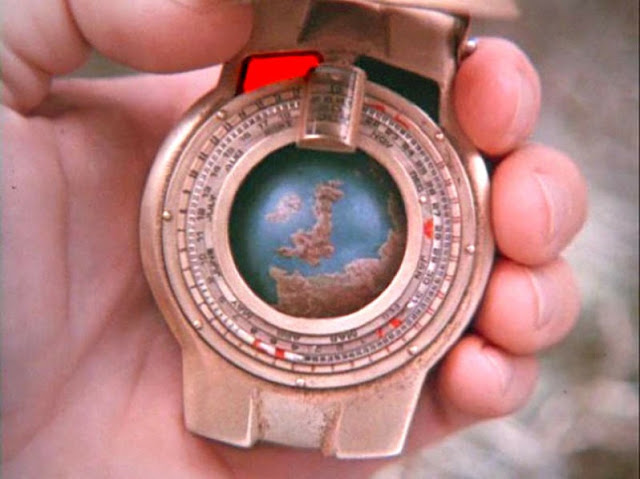Image Source: Cauldrons and Cupcakes.
It used to be that the only ways our perception of the regular flow of time might change significantly were though grief, meditation, madness or trauma. At Ghost Hunting Theories, Sharon Day describes how stress makes people change their view of time, slowing the flow of time down, and transforming perception:
In periods of altered temporal perception, Sharon believes that people see ghosts. This idea chimes with the idea that ghosts are electro-magnetic shades trapped in time pockets. Psychics and mediums, so the theory goes, perceive the underworld because they read time backwards, against its normal direction.if you have recently lost a loved one -- that seems to make you more open to the other side, and if you have undergone major surgery or life-threatening illness. There are moments in our lives, where time slows down for us and we are out of sync with the mainstream, such as depression, illness, grief. Those times are the most often periods we are plagued with transients. Perhaps its our change in perspective of what is important, or changing our routine so we slow down and notice things.
Even intensively studying history requires one spend many hours of present days in a past time period, understanding the past on its own terms. The experience of suspending one's hindsight and accepting historical actors' lack of foreknowledge is not always congruous with life in the 'now.'
Then again, now, the jarring experience once confined to superstition at worst, and to historians' archives at best, is available to anyone with a video camera and a computer. Popular gadgetry has increased people's awareness of time and their ability to manipulate it. Tech affects the temporal progression of language; it enables the mistreatment, misplacement and misunderstanding of historical events on the Internet; it takes cultural phenomena out of their temporal contexts. Computers grant access to whole bodies of historical knowledge, events and images and allow them to be treated like so much random data. Anyone can jumble historical details together in a post-Postmodern collage. This mish-mash is ordered according to nothing but presentist impulses, with no regard for historical context and respect for forward time flow. This trend has been appearing in a lot of Millennial dramas, fiction and cinema. Tech makes the fictional illness, chrono-displacement disorder, real. Moreover, tech makes chrono-displacement disorder the new normal.
The most notable examples of individuals' personal tech-enabled time-plays have so far been fairly benign. People have been more intuitively respectful of the temporal direction of history when they are talking about their own lives. Thus, their plays on time are historically conventional: there are time lapses, wherein people photograph themselves every day over several years, and then put the photos together to make a personal time lapse video (compression of time). Sometimes people revisit a famous event which recurs, decades later (time cycles). Similarly, people retain old footage of themselves and mesh it with new videos, to create a conversation between the past and present (a fairly eternal metaphor of the older man talking to his younger self, which is classic chronal wish fulfillment). For the latest example of the latter, go to the viral video below the jump. It was made by Jeremiah McDonald (see his sites here and here), in which the Gen Y actor and film-maker, who is now 32 years old, talks to his 12-year-old self (via Mike Lynch Cartoons - thanks to -T.).
Doctor Who keeps popping up! 32-year-old Jeremiah McDonald talks to his 12-year-old self. Video Source: Youtube.



















No comments:
Post a Comment